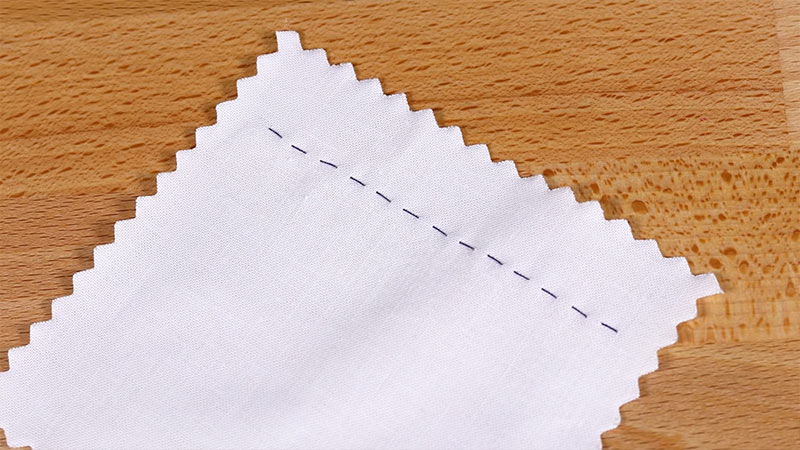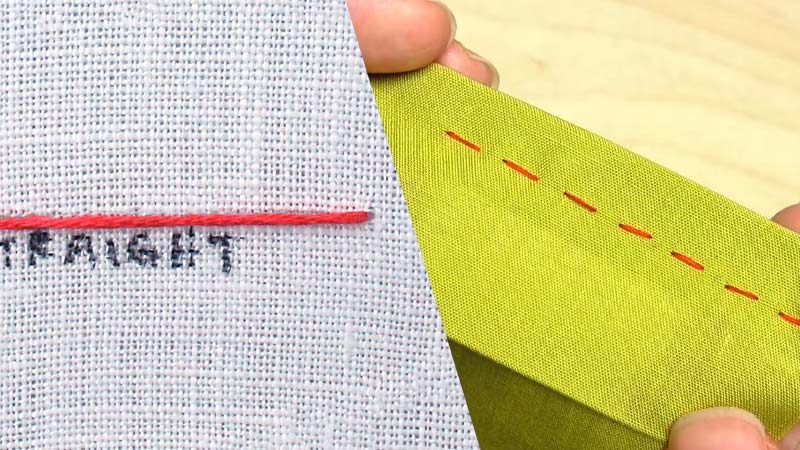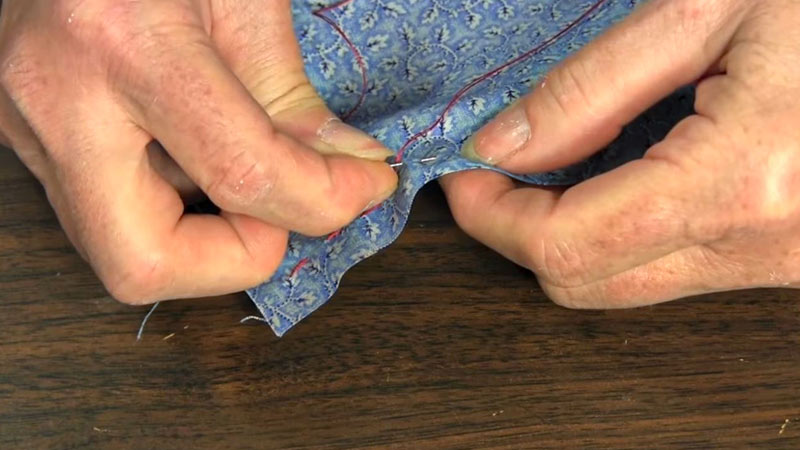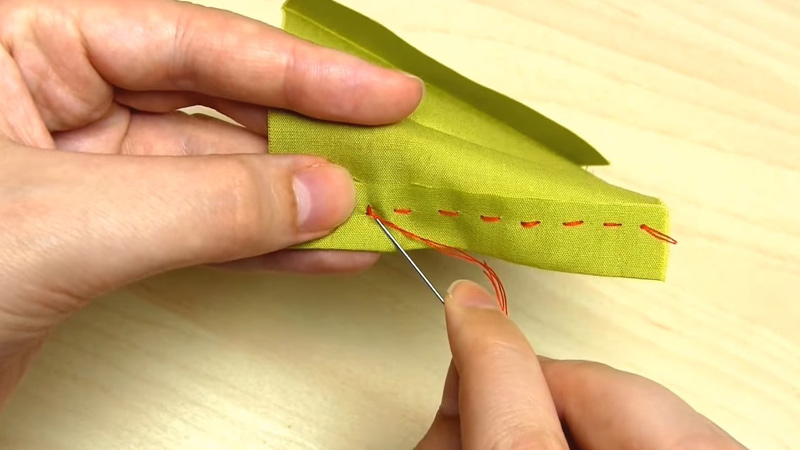Embarking on the journey of sewing unveils a rich tapestry of techniques, and at its core lies the simple yet indispensable running stitch.
This foundational sewing stitch involves the needle weaving in and out of fabric, creating a continuous line that serves as the backbone for numerous projects.
Understanding “What Is A Running Stitch In Sewing?” is akin to grasping the ABCs of the sewing lexicon. Its versatility extends from basic basting to intricate embroidery outlines, making it a vital skill for both beginners and seasoned sewers alike.
As we unravel the essence of this stitch, we unlock a world of possibilities, where the artistry of sewing begins with the rhythmic dance of needle and thread.

What Is A Running Stitch In Sewing?
A running stitch is a basic and versatile hand-sewing technique widely employed in crafting and garment construction.
In a running stitch, the needle is passed in and out of the fabric in a straight line, creating a continuous row of small, evenly-spaced stitches.
This stitch is characterized by its simplicity and efficiency, making it ideal for basting, gathering fabric, or joining seams. The running stitch is easily recognizable by the dashed appearance it imparts to the fabric.
Its uncomplicated nature makes it accessible for beginners, yet its applications extend to various sewing projects, contributing to both functional and decorative elements in the world of sewing.
Straight Stitch Vs Running Stitch

Here’s some difference between straight stitch and running stitch
| Feature | Straight Stitch | Running Stitch |
| Basic Definition | A straight line of stitches, often used for simple seams. | A continuous row of small, evenly spaced stitches. |
| Usage | Primary for permanent seams in garment construction. | Versatile; used for basting, gathering, and attaching. |
| Appearance | Neat, uniform, and closely spaced stitches. | Dashed or dashed-like appearance due to visible spacing. |
| Versatility | Limited to permanent seams and topstitching. | Widely applicable for various sewing and crafting tasks. |
| Tension | Requires more tension for secure seams. | Typically lower tension, suitable for temporary stitching. |
| Skill Level | Commonly used by intermediate to advanced sewers. | Beginner-friendly; often the first stitch learned. |
| Functionality | Ideal for stable, structured seams in most fabrics. | Effective for quick, temporary stitching and gathering. |
Understanding the differences between the straight stitch and running stitch allows sewers to choose the most suitable technique for their specific sewing needs, whether creating permanent seams or temporary stitches for gathering or basting.
What Is A Running Stitch Used For?

The running stitch is a fundamental hand-sewing technique valued for its simplicity and versatility. Its applications extend beyond basic seams, making it an indispensable skill for sewers.
Here are seven diverse ways the running stitch can be effectively utilized:
Seam Basting
Running stitches serve as temporary seam markers, allowing sewers to check the fit and alignment before committing to permanent stitching. This is particularly useful when working with intricate patterns or delicate fabrics.
Gathering Fabric
Ideal for creating gathers or ruffles, the running stitch is employed by sewing a straight line and then pulling the thread to gather the fabric, providing a decorative or functional element to garments and crafts.
Patchwork and Quilting
In quilting and patchwork projects, the running stitch is often used to secure layers of fabric together. It provides a simple yet effective means of quilting, contributing to the overall design and stability.
Securing Hems
Running stitches are employed to secure folded hems temporarily before final stitching. This allows for easy adjustments and ensures an even hemline, which is particularly useful when working with lightweight or slippery fabrics.
Decorative Embellishments
Beyond functionality, running stitches can be utilized for decorative purposes. Creating patterns or adding embellishments with contrasting threads enhances the visual appeal of a project.
Repairing Seams
The running stitch is handy for quick and temporary repairs to seams that may have come undone. It offers a swift solution, especially in situations where immediate mending is necessary.
Closures and Fastenings
Running stitches can be used to attach buttons, snaps, or other fastenings securely. This technique provides a reliable means of securing closures while maintaining a clean and polished finish.
The running stitch’s versatility makes it an invaluable tool for sewers, offering a range of applications from temporary markings to decorative elements in various sewing and crafting projects.
Some Basic Stitch
Mastering basic stitches is the foundation of both sewing and embroidery, providing the essential skills for various projects. Here are some basic about them:
Running Stitch

In sewing, the running stitch involves passing the needle in and out of the fabric in a straight line, creating a simple and versatile stitch. It’s commonly used for basting and gathering fabric before sewing permanent seams.
In embroidery, the running stitch serves as a foundational stitch, forming lines and outlines or adding texture to designs.
Backstitch
The backstitch is a strong and durable stitch in sewing, often used for seams requiring extra reinforcement. In embroidery, it’s employed for outlining and creating defined shapes with a continuous, unbroken line.
Blanket Stitch
Recognized for its decorative edge, the blanket stitch is commonly used in sewing to prevent fabric edges from fraying. In embroidery, it adds a charming border to appliqué work, creating a neat and polished appearance.
Chain Stitch
A looped stitch resembling a chain, this versatile stitch is used in both sewing and embroidery. Sewing can create decorative seams, while embroidery forms intricate lines, fillings, or outlines with a textured appearance.
Whip Stitch
The whip stitch is employed in sewing for joining fabric edges with a simple and fast technique. In embroidery, it can be used to secure edges or create textured lines, contributing to the overall design’s aesthetic appeal.
Understanding and mastering these basic stitches, including the running stitch in both sewing and embroidery, lays the groundwork for a wide range of creative endeavors.
Whether reinforcing seams or adding intricate designs, these stitches form the building blocks of textile artistry.
FAQs
When is a running stitch typically used in sewing?
Running stitches are versatile and commonly used for temporary seams, basting, and gathering fabric. They serve as a foundational stitch, ideal for various sewing projects due to their simplicity and efficiency.
Can a running stitch be used for permanent seams?
While running stitches are often used for temporary purposes like basting, they can also be used for permanent seams, especially in quilting or when a more rustic, handmade look is desired.
How do you secure the end of a running stitch?
To secure the end of a running stitch, make a small backstitch or create a knot at the end of the thread. This ensures that the running stitches remain in place and do not unravel.
What is the difference between a running stitch and a backstitch?
Unlike a running stitch, a backstitch is a stronger and more secure stitch, often used for permanent seams. It involves doubling back on the previous stitch, creating a continuous, unbroken line for added durability.
Can a running stitch be used for embroidery?
A running stitch is a fundamental embroidery stitch. In embroidery, it is utilized for outlining designs, creating fine lines, or adding texture to intricate patterns, showcasing its versatility beyond basic sewing applications.
Conclusion
The significance of the running stitch in sewing is profound, as it lays the groundwork for countless creative endeavors.
It is not merely a stitch but a versatile tool that seamlessly binds fabrics together, offering a canvas for both practical construction and artistic expression.
From securing seams to embellishing with delicate embroidery, the running stitch is the heartbeat of sewing craftsmanship.
As needles weave through the fabric, the running stitch becomes a testament to the timeless artistry and precision that define the world of sewing, stitching together the threads of creativity and functionality.
Leave a Reply